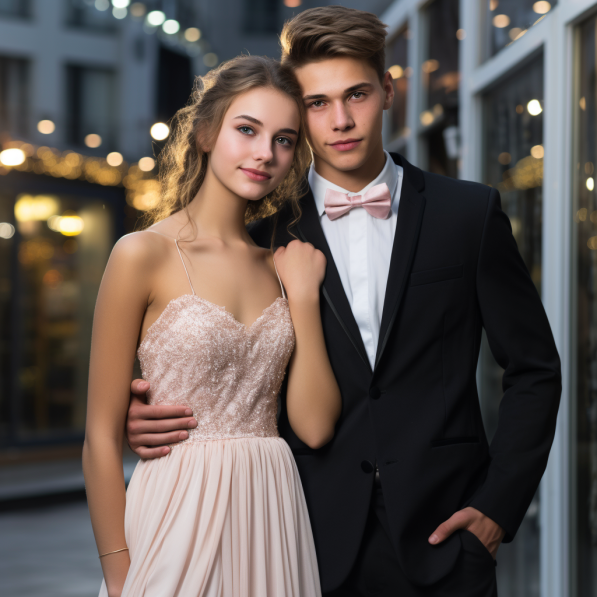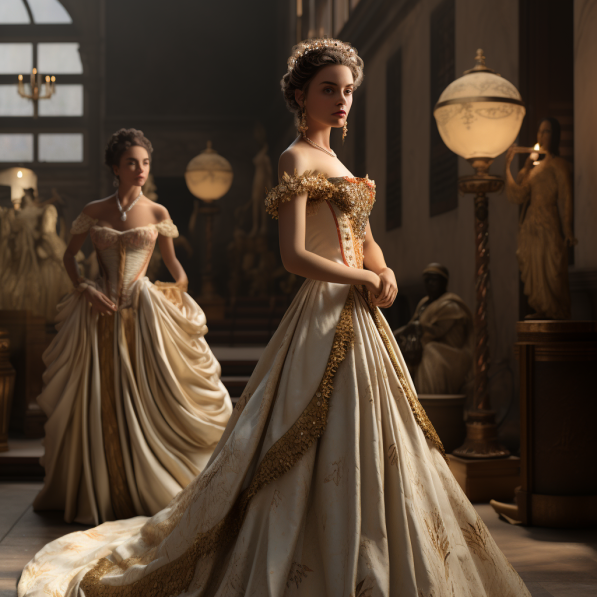- A First-Timer’s Guide to the Perfect Gala Dress - February 20, 2024
- How to Style Yellow Dresses for Every Occasion - February 12, 2024
- Exploring the Versatility of Brown Dresses: Casual to Formal Styles - February 11, 2024
Last updated 3 months ago.
Introduction: The Essence of Prom Night

Prom night is a defining moment in high school, a blend of age-old traditions and contemporary styles. Central to this event are terms like “Black tie,” “Dress,” “Necktie,” “Bow tie,” and the overall “Dress code.” These elements are pivotal in shaping the evening, providing a framework within which students can express their individuality and sense of style while adhering to the school’s standards.
The Evolution of School Dress Codes
The journey of school dress codes reflects the changing societal values over decades. Initially, dress codes were stringent and often reflected conservative attitudes. However, as society has become more diverse and inclusive, these policies have evolved. Today’s dress codes are more accommodating of different styles, cultures, and gender expressions, balancing respect for tradition with the need for individual expression.
The Purpose and Impact of Dress Codes at Prom
School dress codes for prom serve multiple purposes. They establish a formal atmosphere, ensuring that students dress appropriately for this significant occasion. These policies also play a crucial role in safety and decorum, preventing inappropriate attire that could detract from the event’s dignity. Additionally, dress codes aim to foster an inclusive environment where every student feels comfortable and respected, regardless of their background or identity.
Understanding Common Dress Code Policies
Most schools require formal attire for prom. The term “Black tie” often signifies a level of formality involving tuxedos and evening gowns. However, the interpretation of “formal” can vary, with some schools being more flexible, allowing for cultural dresses or more modern interpretations of formal wear. The key is finding a balance between adhering to the formal nature of the event and expressing one’s personal style.
Navigating Dress Code Controversies
Controversies surrounding dress codes often focus on issues like gender norms and cultural representation. Questions arise about whether traditional dress codes reinforce outdated gender stereotypes or fail to accommodate cultural attire. Progressive schools are addressing these challenges by revising their policies to be more inclusive and representative of their diverse student body.
Dressing for Prom: Tips for Compliance and Style
Adhering to the prom dress code doesn’t mean sacrificing personal style. Students can explore various options within the guidelines, choosing attire that reflects their personality while respecting the formal nature of the event. Key considerations include the fit, color, and style of the dress or suit, as well as accessories like “Neckties” or “Bow ties” that complement the outfit.
Alternative Attire: Breaking the Mold
For those seeking to deviate from the traditional “Black tie” attire, there are numerous alternatives. Creative outfits that still fit within the dress code guidelines can include unique color schemes, unconventional cuts, or culturally specific attire. The aim is to offer students the freedom to express their individuality while maintaining the event’s formal essence.
The Role of Parents and Educators in Dress Code Guidance
Parents and educators play a vital role in helping students navigate the complexities of prom dress codes. They can provide guidance on selecting appropriate attire, understanding the school’s policies, and finding ways to express individuality within the set guidelines.
Legal and Ethical Dimensions of Dress Codes
Schools must consider the legal and ethical implications of their dress code policies. It’s essential that these policies do not discriminate based on gender, race, religion, or cultural background. Schools are increasingly being called upon to ensure their dress codes are inclusive, fair, and respectful of all students.
Case Studies: Progressive Dress Code Policies
Some schools stand out for their progressive approach to prom dress codes. These institutions have developed policies that are not only inclusive but also celebrate the diversity of their student body. These case studies serve as models for other schools looking to update their dress code policies.
The Student Experience and Dress Codes
The impact of dress codes on the student experience is significant. A well-crafted dress code can enhance the prom experience, making it an inclusive and memorable event. Conversely, restrictive or discriminatory policies can negatively impact the atmosphere and students’ enjoyment of the night.
Preparing for Prom: A Detailed Checklist
Effective preparation is key to a stress-free prom experience. This involves understanding the dress code in advance, choosing the right outfit, considering comfort and style, and ensuring all elements of the attire, from the “Necktie” to the shoes, align with the school’s guidelines.
Future Trends in Prom Dress Codes
As societal attitudes continue to evolve, so do prom dress codes. The future points to increasingly inclusive and flexible policies that accommodate a wider range of expressions and identities. These changes reflect a growing recognition of the diverse needs and preferences of the student body.
Concluding Insights on Prom Dress Codes
School dress codes for prom, encompassing “Black tie” elegance, formal dresses, and diverse attire, play a significant role in the prom experience. They reflect a balance between tradition and individual expression, fostering an environment of respect and celebration. As we move forward, these policies will continue to evolve, capturing the spirit of inclusivity and respect for individuality.
FAQs on Prom Dress Codes
Q. What defines ‘appropriate’ prom attire under a typical dress code?
A. Formal wear like “Dress,” “Necktie,” and “Black tie” attire, adhering to the school’s guidelines.
Q. How can dress codes evolve with changing times?
A. Schools are increasingly revising policies to be more inclusive, accommodating modern trends and diverse student needs.
Q. How can students express their style within dress code limits?
A. Personal style can be expressed through unique accessories, color choices, and styles within the formal wear framework.
Q. What are the implications of not following the dress code?
A. Consequences vary by school but generally include discussions on compliance and, in some cases, exclusion from the event.
Q. How do inclusive dress codes address cultural diversity?
Progressive dress codes accommodate cultural differences, allowing for a broader range of formal attire that respects diverse traditions.

